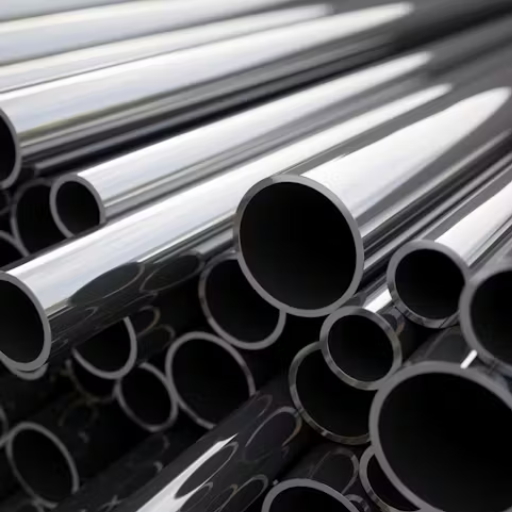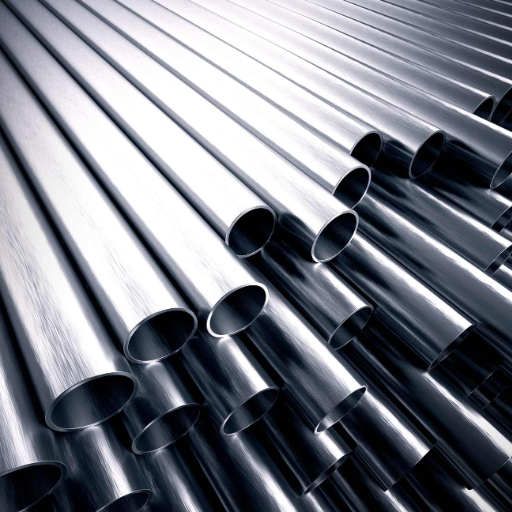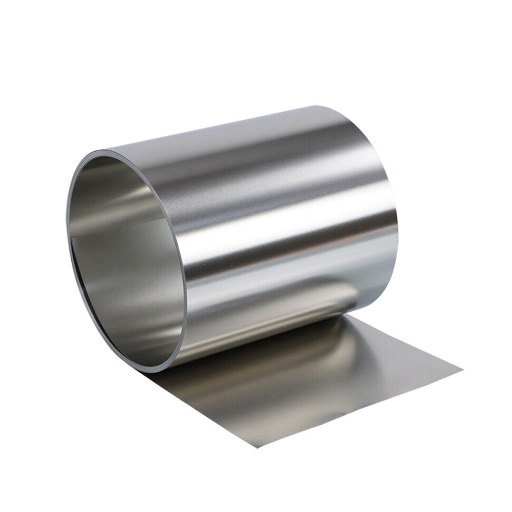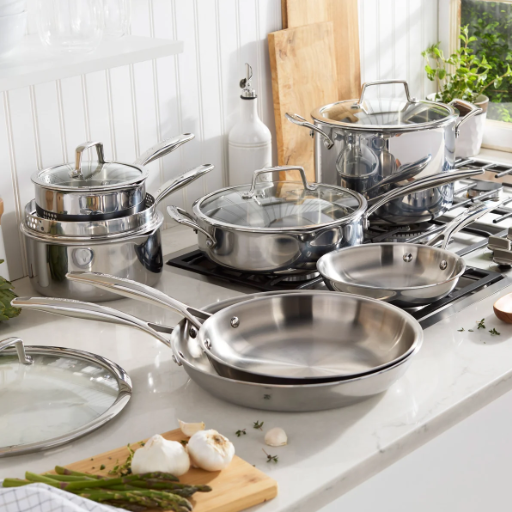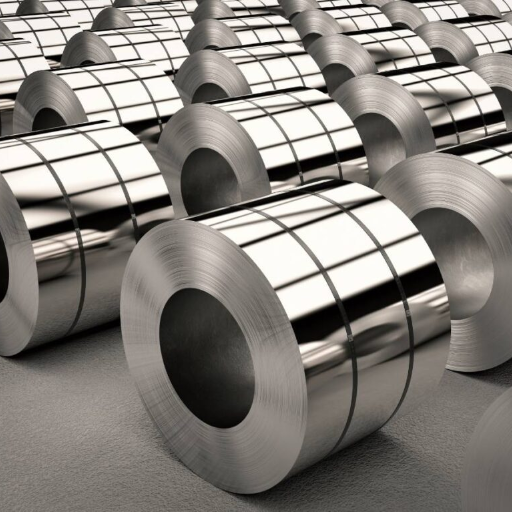Due to their remarkable resistance to rust and corrosion, galvanized steel sheets are widely used across industries from automotive construction to manufacturing. The following is a detailed guide on everything there is to know about galvanized steel sheets including their distinctive features, how they are made, and the different industries that use them. Also, we shall analyze the pros and cons of other materials, the best methods to maintain the sheets for prolonged use, and important factors to think about when determining the right type of sheet for a specific project. This information is suitable for both laypeople and field specialists seeking to understand the attributes underlying this multifunctional metal.This article will tell you all the important information on the unparalleled capabilities of galvanized steel sheets and their significance to many industries.
What is galvanized steel sheet and how is it made?

Galvanized steel sheet is a type of steel that is coated with a layer of zinc to protect it from corrosion and rust. This protective coating is achieved through a process called galvanization, where the steel is either dipped in molten zinc (hot-dip galvanizing) or coated through electroplating. The zinc coating acts as a barrier against environmental elements and also provides sacrificial protection, meaning it corrodes first before the steel underneath. The result is a durable, long-lasting material widely used in construction, automotive, agriculture, and other industries requiring resilience to moisture and weathering.
Understanding the galvanization process
The galvanization process typically involves three main steps to ensure the steel is adequately protected and long-lasting:
Surface Preparation: This is the most critical step, as any contaminants on the steel surface can affect the quality of the zinc coating. It includes cleaning the steel through degreasing, pickling to remove rust and mill scale using acidic solutions, and finally a fluxing process to eliminate oxides and prepare the surface for zinc adhesion.
Galvanizing: Once cleaned and prepped, the steel is immersed in a bath of molten zinc heated to around 840°F (449°C). During this stage, the zinc reacts with the steel surface, forming multiple layers of zinc-iron alloy that bond metallurgically to the base material.
Inspection and Finishing: After galvanizing, the coated steel undergoes thorough inspection to ensure full coverage, proper thickness, and adherence. Excess zinc is sometimes removed, and the finished product may be cooled in water or air depending on the application.
This method offers superior protection against corrosion, providing decades of durability even under harsh conditions. The combination of physical barrier plating and sacrificial anode protection makes galvanized steel a preferred choice across multiple industries.
Types of galvanized steel sheets
Galvanized steel sheets come in various types, each designed for specific applications and performance requirements. The most common types include:
Hot-Dip Galvanized Steel Sheets
These sheets are produced by immersing steel in molten zinc, forming a robust coating that protects against corrosion. They are highly durable and widely used in construction, automotive, and agricultural industries due to their strength and resistance to environmental elements.
Galvannealed Steel Sheets
Created through a process that involves both galvanizing and annealing, these sheets have a matte surface that allows for improved paint adhesion. Often used in automotive manufacturing and appliances, they are popular for projects requiring strong bonding with additional coatings or finishes.
Electro-Galvanized Steel Sheets
These are produced through an electrochemical process, resulting in a thinner and more uniform zinc coating. While they provide decent corrosion resistance, their smoother surface makes them ideal for applications where appearance is a priority, such as household appliances and electronics.
Each type offers unique properties suited to different environmental conditions and industrial requirements, making galvanized steel sheets highly versatile and essential across various sectors.
Difference between hot-dip and electrogalvanized steel
Hot-dip galvanized steel and electrogalvanized steel differ primarily in their coating process, thickness, and performance. Hot-dip galvanization involves immersing the steel in molten zinc, creating a thick, rugged coating with excellent corrosion resistance. This method is suitable for heavy-duty applications, such as construction, outdoor structures, and automotive frames, where durability and long-term protection are critical.
Electrogalvanized steel, on the other hand, employs an electrochemical process that applies a thinner, more uniform zinc layer. While it offers moderate corrosion protection, its smooth surface makes it better suited for applications requiring precision and aesthetic appeal, such as household appliances and automotive panels.
The choice between these two depends on the specific requirements of the project, including environmental conditions, desired appearance, and mechanical durability. Both types have their advantages, ensuring galvanized steel remains indispensable across various industries.
What are the benefits of using galvanized steel sheet?

Using galvanized steel sheet offers numerous benefits, including exceptional corrosion resistance, which extends the material’s lifespan even in harsh environments. It requires minimal maintenance, reducing long-term costs while ensuring durability and reliability. Additionally, galvanized steel sheet has a uniform, protective coating that enhances its aesthetic appeal and makes it suitable for both functional and decorative applications. Its versatility and cost-efficiency make it a preferred choice across industries such as construction, automotive, and manufacturing.
Superior corrosion resistance properties
Galvanized steel sheet offers exceptional corrosion resistance due to its zinc coating, which acts as a protective barrier against moisture, oxygen, and other environmental factors. This coating not only prevents rust from forming but also provides sacrificial protection, meaning the zinc will corrode first to protect the underlying steel. Its performance is further enhanced by the uniformity of the coating, ensuring consistent protection across its surface. This makes galvanized steel an ideal choice for applications exposed to harsh weather conditions, industrial environments, or high levels of humidity. With a long service life and low maintenance requirements, it is widely regarded as a cost-effective solution for extending the durability of materials in critical applications.
Cost-effectiveness compared to other materials
When compared to other materials, galvanized steel stands out due to its exceptional balance between upfront cost and long-term savings. Unlike stainless steel, which can be significantly more expensive, galvanized steel offers robust protection against corrosion at a fraction of the price. Its durability reduces the need for frequent replacements or repairs, driving down maintenance costs over time. Compared to materials like aluminum, which may lack the same strength in structurally demanding environments, galvanized steel provides a cost-effective alternative with superior load-bearing capacity. Additionally, its recyclability further enhances its economic and environmental value, making it a practical choice for various industries.
Versatility in various applications
Galvanized steel demonstrates exceptional versatility, making it a reliable material across countless industries. Its durability and corrosion resistance make it ideal for construction purposes, such as roofing, structural beams, and fencing, where exposure to weather conditions is inevitable. Manufacturing industries also value galvanized steel for creating durable components like automotive parts, electrical appliances, and equipment that require long-term performance. Additionally, its use extends to the agricultural sector, with applications in irrigation systems, silos, and barns. The ability to withstand diverse environmental conditions without compromising on strength or longevity highlights why galvanized steel continues to be a preferred choice in both industrial and residential projects.
How does galvanized steel sheet compare to other materials?

Galvanized steel sheets stand out due to their superior corrosion resistance when compared to materials like standard steel or aluminum. Unlike non-treated steel, galvanized sheets endure harsh environmental conditions without rusting, thanks to their zinc coating which forms a protective barrier. While aluminum is lightweight and corrosion-resistant, it is generally less durable and more expensive than galvanized steel. Furthermore, galvanized steel offers excellent strength-to-cost efficiency, making it an ideal choice for both structural and functional applications where affordability and performance are key priorities.
Galvanized steel vs. stainless steel
When comparing galvanized steel and stainless steel, it’s important to consider factors such as durability, corrosion resistance, cost, and intended application. Galvanized steel is created by coating regular steel with a layer of zinc, which provides protection against rust and makes it a cost-effective choice for outdoor or industrial uses, especially in areas prone to moisture. However, this protective layer may wear off over time, reducing long-term durability.
On the other hand, stainless steel is an alloy containing chromium, giving it superior corrosion resistance and the ability to maintain its strength and aesthetic appearance even in harsh environments. This makes it ideal for medical equipment, food-grade materials, and architectural projects. However, stainless steel comes at a significantly higher cost compared to galvanized steel.
Overall, the choice between galvanized steel and stainless steel depends on the specific requirements of the project. For affordability and adequate corrosion protection, galvanized steel is a practical option, while stainless steel is better suited for applications demanding higher durability and longevity.
Advantages over non-galvanized steel
Superior Corrosion Resistance
Galvanized steel is coated with a layer of zinc, which acts as a barrier and protects the underlying metal from rust and environmental wear. This zinc coating slows down the oxidation process, ensuring the steel remains usable for a significantly longer period than non-galvanized steel.
Cost-Effective Durability
While more affordable than stainless steel, galvanized steel offers greater longevity compared to non-galvanized steel, reducing the need for frequent replacements. Its durability translates to lower maintenance costs over time, making it an economical choice for construction and industrial applications.
Ease of Maintenance
The zinc coating on galvanized steel provides a self-healing ability by preventing exposed areas from corroding, even if the surface becomes scratched or damaged. This minimizes the need for constant upkeep and inspections compared to bare steel.
Versatility and Performance
Galvanized steel is highly adaptable to various environmental conditions, including extreme weather, humidity, and exposure to water. It’s commonly used in outdoor structures, industrial equipment, and fencing where non-galvanized steel would deteriorate rapidly.
Environmental Benefits
The long lifespan of galvanized steel results in less material waste over time, reducing the environmental impact of replacements. Additionally, many galvanized steel products are recyclable, supporting sustainable development practices.
Comparison with other corrosion-resistant metals
Galvanized steel is often compared to stainless steel, aluminum, and weathering steel for corrosion resistance. Stainless steel offers superior rust protection due to its chromium content, creating a passive oxide layer that resists oxidation. However, it is typically more expensive than galvanized steel, making it a less economical choice for large-scale applications. Aluminum, another corrosion-resistant material, is lightweight and naturally forms a protective oxide layer, but it lacks the structural strength of steel, making it unsuitable for heavy-duty applications. Weathering steel, like Corten, is designed to form a stable rust-like appearance over time, which enhances durability. However, it requires precise environmental conditions to develop its protective layer, unlike the uniform protection provided by galvanization. Each metal presents distinct advantages, but galvanized steel often strikes the best balance between cost, durability, and ease of maintenance.
What are the common applications for galvanized steel sheet?

Galvanized steel sheet is widely used across various industries due to its durability and resistance to corrosion. Common applications include roofing and wall panels in construction, automotive components like body parts, ductwork for HVAC systems, agricultural equipment, and appliances such as washing machines. Its versatility and long-lasting properties make it a preferred material for both structural and decorative uses.
Use in construction and roofing
Galvanized steel sheets are a staple in construction and roofing due to their durability, weather resistance, and low maintenance. They provide excellent protection against rust, making them ideal for both residential and commercial roofing. Their lightweight nature allows for easier handling and installation while maintaining structural integrity. Additionally, galvanized steel is cost-effective and recyclable, aligning with sustainable building practices. Beyond roofing, it is utilized in walls, framing, and structural supports, offering reliable performance in demanding environments.
Automotive industry applications
Galvanized steel plays a crucial role in the automotive industry due to its durability, corrosion resistance, and cost-effectiveness. It is extensively used in manufacturing car bodies, structural components, and underbody parts, ensuring long-lasting protection against rust caused by environmental factors like moisture and road salt. The zinc coating on galvanized steel enhances its strength while maintaining malleability, which is essential for shaping intricate automotive designs. Additionally, its recyclability aligns with the industry’s growing focus on sustainable practices. By offering a balance of performance, affordability, and sustainability, galvanized steel remains a key material in modern automotive production.
Industrial and manufacturing uses
Galvanized steel is a staple in industrial and manufacturing applications due to its durability, cost-effectiveness, and resistance to corrosion. It is extensively used in the construction industry for structural components like beams, frames, and scaffolding, ensuring long-lasting performance under harsh conditions. Additionally, it plays a critical role in manufacturing equipment, storage tanks, and piping systems, where strength and corrosion resistance are essential. Galvanized steel is highly versatile, making it ideal for everything from electronics enclosures to agricultural tools and industrial machinery. Its recyclability further boosts its utility, supporting eco-conscious manufacturing processes while delivering reliability and efficiency across a wide range of applications.
How to choose the right galvanized steel sheet for your project?

Project Requirements
Assess the specific needs of your project, including load-bearing capacity, environmental exposure, and intended lifespan. Understanding these factors helps determine the appropriate thickness and coating type.
Coating Type and Thickness
Choose the right galvanization process and zinc coating thickness to ensure adequate corrosion protection based on your environment, such as indoor versus outdoor use.
Application Environment
Consider exposure to moisture, chemicals, or extreme temperatures. For harsh environments, opt for sheets with higher resistance to corrosion and wear.
Formability and Strength
Ensure the material’s ductility and tensile strength align with your design and fabrication needs, especially for intricate shapes or heavy-duty applications.
Budget and Sustainability
Balance cost-effectiveness with performance, durability, and recyclability. Galvanized steel’s long-term benefits often justify initial investment costs.
Considering zinc coating thickness
Zinc coating thickness is a critical factor influencing the durability and corrosion resistance of galvanized steel. The thickness is typically measured in microns or ounces per square foot and directly correlates to the longevity of protection against rust. Thicker coatings provide greater resistance to environmental factors like moisture and pollutants, making them ideal for projects in harsher climates or industrial settings. However, thicker zinc layers may also increase costs and slightly impact the material’s mechanical properties, such as ductility. When selecting zinc coating thickness, balance the environmental exposure, service life requirements, and budget constraints.
Selecting the appropriate alloy composition
Choosing the right alloy composition is crucial to achieving the desired balance of strength, corrosion resistance, and workability for a given application. Alloys are typically tailored by combining base metals with specific elements to enhance performance. For instance, adding chromium to steel creates stainless steel, boosting corrosion resistance, while aluminum alloys with magnesium or silicon offer greater strength and thermal resistance. To make an informed decision, consider factors such as the operating environment, mechanical demands, and manufacturing processes. Standards like ASTM or ISO often provide detailed guidelines for selecting suitable alloys based on usage scenarios. Additionally, cross-referencing supplier datasheets and leveraging material comparison tools will ensure the chosen alloy meets both performance and budgetary requirements.
What are the best practices for working with galvanized steel sheet?

Galvanized steel sheets should be handled in a way that minimizes damage to the zinc coating while maximizing its effectiveness. For starters, make sure that tools and machines intended to be used on the coated surfaces are used as any other machinery may damage the surface being protected. PPE must also be worn to protect from exposure of the zinc while cutting or welding the materials. While welding, adequate ventilation for inhalation of harmful fumes should be provided. Furthermore, surfaces that require paint of a bond must be cleaned and degreased for the bond to be effective. Efficient storage of the sheets is also a factor to consider. They should be stored in a dry, ventilated room in order to eliminate the possibility of white rust formation.
Proper cutting and fabrication techniques
When working with galvanized sheets, it is imperative to follow proper cutting and fabrication techniques to maintain the material’s integrity and coating. Use sharp, high-quality tools such as tin snips, shears, or specialized cutting gear to avoid damaging the zinc layer. For power tools, opt for saw blades designed for metal cutting and ensure cuts are clean and precise to reduce burr formation. Minimize heat generation during cutting, as excessive heat can destroy the protective galvanized coating, leading to premature corrosion.
During fabrication, always handle the sheets carefully to prevent scratches or dents that might expose the base metal. If welding is required, utilize low-heat methods and apply a zinc-rich primer or cold galvanizing compound to restore the coated areas post-welding. Ensure that all safety measures, including proper ventilation and PPE, are adhered to. By implementing these approaches, the material’s protective properties are preserved, contributing to better performance and durability across its applications.
Welding galvanized steel: challenges and solutions
Welding galvanized steel poses several unique challenges due to its zinc coating, which, while offering excellent corrosion resistance, introduces complexities during the welding process. One significant issue is the release of zinc oxide fumes when the coating is heated above its vaporization point, typically at 1652°F (900°C). These fumes pose health hazards and necessitate proper ventilation and the use of personal protective equipment (PPE).
Another common challenge is porosity in welds, caused by the interaction of zinc with the molten metal. This can weaken the weld strength and reduce overall durability. To mitigate this, careful preparation is crucial, such as grinding off the zinc coating in the region to be welded. Post-weld cleaning and repair using zinc-rich primers or cold galvanizing compounds are necessary to restore corrosion protection.
Heat input during welding must also be carefully managed to prevent damage to nearby coated areas. Low-heat welding techniques, such as MIG (Metal Inert Gas) or TIG (Tungsten Inert Gas) welding, are recommended to minimize heat-affected zones. Additionally, using proper filler materials suited for galvanized steel can enhance weld quality and structural integrity.
By addressing these challenges with appropriate safety measures and technical strategies, welding galvanized steel can be performed effectively while maintaining the advantages of its protective zinc coating.
Maintenance and care for long-lasting performance
To ensure galvanized steel retains its durability and protective qualities, regular maintenance is essential. Begin by inspecting the surface routinely for signs of damage, such as scratches, rust, or white powdery residue (zinc corrosion). Cleaning the surface with a mild detergent and water is typically sufficient, but for tougher buildup, a soft bristle brush or non-abrasive pad can be used. Avoid harsh chemicals or abrasive tools that may compromise the protective coating.
When repairing damaged areas, use zinc-rich paint, sprays, or pastes to restore corrosion protection effectively. Additionally, ensure the steel remains in a well-ventilated environment to prevent moisture buildup, which can accelerate corrosion. For outdoor structures, check for pooling water or debris accumulation and address these promptly. Proactive maintenance, including periodic touch-ups and thorough inspections, will maximize the lifespan of galvanized steel while preserving its structural and aesthetic integrity.
References
Frequently Asked Questions (FAQ)
Q: What is a galvanized steel sheet?
A: A galvanized steel sheet is a type of metal sheet that has been coated with a layer of zinc to protect the steel from corrosion and rust. This process, known as galvanization, involves immersing the steel in molten zinc.
Q: How does galvanized steel sheet metal resist rust?
A: Galvanized steel sheet metal resists rust through its zinc coating. The zinc layer acts as a barrier to prevent moisture and oxygen from reaching the underlying steel, effectively protecting the steel from corrosion and rust.
Q: What are the advantages of using galvanized steel sheet and plate?
A: The advantages of using galvanized steel sheet and plate include excellent corrosion resistance, longevity, cost-effectiveness, and minimal maintenance requirements. Additionally, they are weldable and can be cut to size for various applications.
Q: How is galvanized sheet metal produced?
A: Galvanized sheet metal is produced through a process called hot-dipping. In this process, steel sheets are immersed in molten zinc, which forms a protective zinc layer on the surface of the steel.
Q: Can galvanized steel sheet metal be used in marine environments?
A: Galvanized steel sheet metal can be used in marine environments, but its performance may vary. While the zinc coating offers some protection against rust, prolonged exposure to saltwater can eventually lead to corrosion. For enhanced durability, stainless steel may be a better option.
Q: What are common uses for galvanized steel?
A: Common uses for galvanized steel include construction materials, automotive parts, agricultural equipment, and outdoor structures. Its corrosion resistance makes it ideal for applications exposed to the elements.
Q: How does galvanized steel compare to stainless steel?
A: Galvanized steel is typically more cost-effective and provides good corrosion resistance, while stainless steel offers superior resistance to rust and is often used in more demanding environments. Both have their own specific uses and benefits.
Q: What types of sheet metal are available from an industrial metal supply?
A: An industrial metal supply typically offers various types of sheet metal, including hot rolled steel, galvanized sheet metal, and stainless steel. Each type has different properties and is suited to different applications.
Q: How can I determine the thickness of the sheet when purchasing galvanized steel?
A: The thickness of the sheet is usually specified in gauges. The gauge number indicates the thickness, with a higher gauge number representing a thinner sheet. Metal suppliers can provide sheets cut to size based on your requirements.
Q: Who should I contact for more information on galvanized steel sheet metal?
A: For more information on galvanized steel sheet metal, you should contact a reputable metal supplier or industrial metal supply company. They can provide expert advice and help you select the right steel product for your needs.

